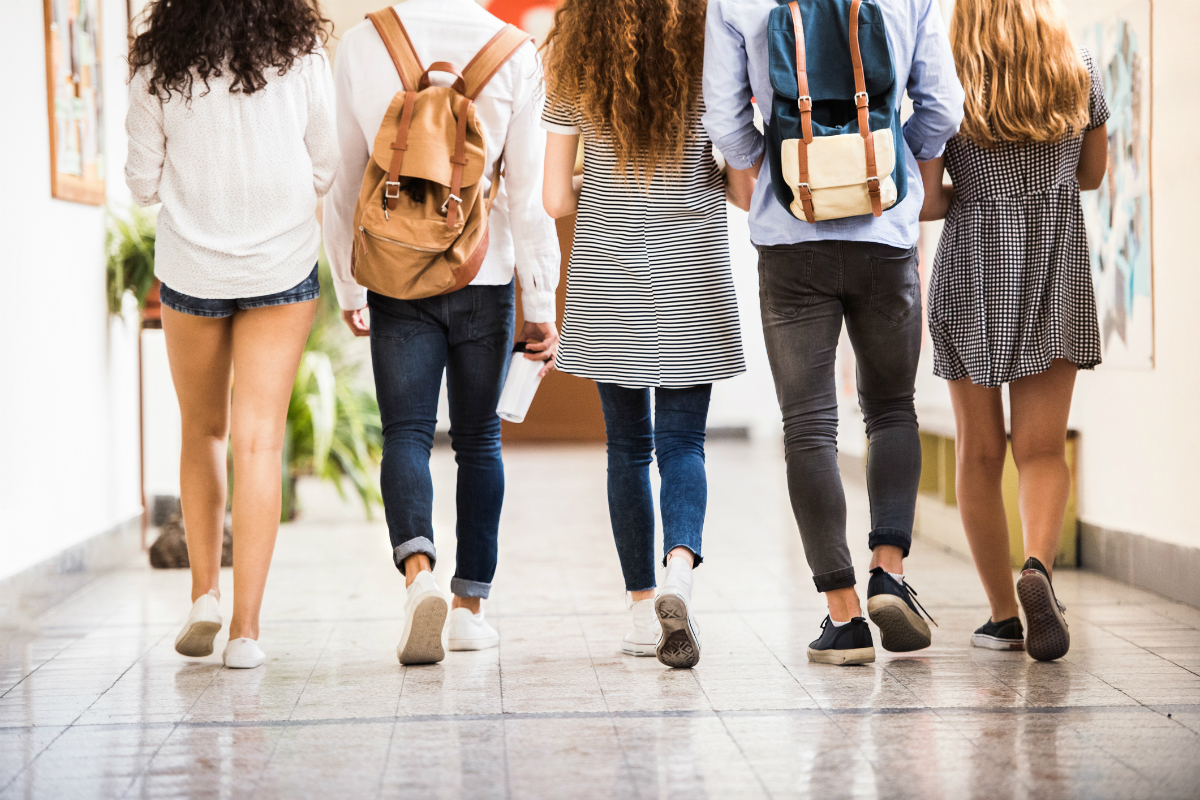Four high school students, members of the California Center for School Climate’s (CCSC) Youth Advisory Team, shared their experiences being a young person today, impacts of the pandemic on their academic and social lives, advice for educators and more during a recent webinar, “Youth Perspectives: The Importance of Caring Relationships at School,” part of CCSC’s 2023 Annual Virtual Event, which focused the power of relationships in fostering a positive school climate.
Being a high schooler in 2023 is complex. It can be fun but also demanding, the teens expressed. As digital natives, they have more access to information and opportunities than some prior generations, but it comes with its hardships.
“There’s still a lot of gaps, but for the most part, students have more opportunity to get involved in their student body and their local and national communities,” said Julian Berkowitz, a senior from Santa Clara County. “But I also think with this increase in accessibility and having so many things to do, there has been a lot of pressure and a lot of stress specifically on this new generation of students to actually do all of these things … not to mention the increased pressure for college and the increased difficulty in applying to certain colleges. I think there’s a very difficult mentality for a lot of students, including myself, which is there are so many things available and having the feeling that we have to do everything — and we have to do everything perfectly.”
While academic pressures and challenges such as bullying, fear of rejection, and grappling with beauty standards online and in person have been present for decades, the continued proliferation of social media has increased the intensity. “I think just navigating what it means to be on social media and how it can affect your mental health is something that a lot of adults struggle to do. Our generation is trying to figure that out too,” said Alexa Southall, a San Diego County sophomore.
And this is all on top of living through a global health crisis and virtual learning, which created knowledge gaps and social disconnects for some young people. Many students are having a hard time readjusting, the Youth Advisory Team members said. That said, social media can also be a positive for those who struggle socially, as it can help them gain confidence, Berkowitz noted.
Providing students with emotional and educational supports is key right now, said Jubia Chavez, a senior in Fresno County. Peer mediation programs, Hope Squad groups where students can talk with one another and connect classmates with trusted adults as needed, wellness centers, and free periods to do homework and ask teachers questions are methods the teens suggested to support students, as well as having direct communication lines to school and district leaders.
“I think one aspect that’s really important in terms of administrators or schools supporting students and their emotional health is having student committees where students are able to directly voice their concerns or opinions to administrators or superintendents,” Berkowitz said. “Having these kinds of smaller committees within the school, and then larger ones within the district where certain students are chosen or certain students can speak out about these topics — I think it’s very important to help bridge that gap between admin and students.”
Building connections and culture
During the discussion, the teens pondered what it means to feel safe at school.
“I think feeling safe at school physically and mentally are two very different things,” said Aisha Bilgrammi, a sophomore from Orange County. “Feeling safe mentally is really knowing that you have people you can not only trust, but who will advocate for you and support you, whether it be peers or adults. We see that in healthy relationships with our peers and adults. And I think being protected physically is knowing that there’s appropriate and effective laws and regulations [in place].”
For adults to start to build connections with students, intention is key, Bilgrammi said, and it’s important for students to know they’re supported beyond academics to begin to feel more comfortable and seen.
“When considering positive school climates, it is important to consider that not one method is necessarily going to fit for every student and it’s very important to be flexible in the approaches you’re taking, and just really considering the student perspective at all times,” Southall said. “I think that takes a lot of understanding and caring for the well-being of students. All of us can attest to the fact that we’re students and we go to school to be educated, but before that, we’re teenagers trying to navigate this period between being a kid and being an adult. So, I think it’s important to really focus on the wellness part of just being a person outside of the academic standards. I think as we emphasize that part and going to students with what they may need in the support, it will be much easier to effectively help students build a good experience when it comes to positive climates at school.”
Berkowitz added that smaller interactions like stopping a student to ask how they’re doing aid in relationship-building more than large events or schoolwide activities.
The teens concluded that students can promote positive school climates by reflecting on their own behavior, refrain from gossiping by developing professionalism and sensitivity, setting boundaries, respecting others’ privacy and recognizing their power as individuals and as a group.





